
Vendee Globe co-skipper
IMOCA 60s may be a little faster or have specialist sails for certain conditions, but one reason why we have seen the monster 24 hour runs in this Vendee Globe is due to the marked improvement in the skill of the helmsman. By this we mean not the skipper, but the autopilot.
Since the 2008-9 Vendee Globe, B&G has taken the lion’s share of the autopilot market in the IMOCA 60 fleet. While last time there was an equal split between B&G and French manufacturer NKE, this time B&G pilots were fitted on 16 of the 20 boats that set out just over a month ago from Les Sables d’Olonne.
This has largely come about following the significant development work B&G did on their pilots going into the last Vendee.
“Six months before that race we had this dawning realisation that our pilot wasn’t working well,” admits Miles Seddon, B&G’s Business Development Manager. “They’d jumped to this new generation of designs with hard chines, masthead chutes, slightly different keels and more performance and it meant that the forces on the boat were different, so the pilot was really, really struggling. Even in 15 knots of breeze with an A2 up, you couldn’t control the boat under pilot. You’d feel a broach about to happen and the rudder would just stay there as the heel increased. It wasn’t doing anything that as a sailor you were willing it to do...”
To address this problem they took their autopilot engineer out sailing on an IMOCA 60. They also spoke to several of the skippers – in particular Alex Thomson, Brian Thompson and Seb Josse - and acquired much performance data from the boats to investigate the issues. They then set about resolving them. “To get it to sail a bit more like a human would sail,” describes Seddon.
Bringing heel into the equation was one of the primary goals. Seddon explains: “We were always looking at ‘what does the skipper do?’ So we now monitor the heel of the boat on a moving average, a bit like you’d do when you’re sailing: If you feel the heel increasing as you’re downwind, the pilot will bear away slightly to maintain heel, so the pilot is trying to steer you like your primary senses [tell you it should]. The pilot can’t see, but it can feel and one of the primary things in sailing is feeling the heel angle, so it is quite an important parameter to sail by.”
Since then, they have also added several safety features such as gust bear away. With this the pilot monitors the average trends in wind speed and, as it says on the tin, when a gust hits the pilot will duly bear away. When the gust passes the pilot will either bring the boat back on course, or if it proves to be a sustained wind increase, it will remain cracked off until the skipper retrims the boat or carries out a sail change and resets the pilot.
Seddon provides the example: “If you are sailing along at 145° TWA in 20 knots and you are asleep and suddenly the wind increases to 25 knots it will bear you down to 147°, so not very much, but enough to take the sting out of the tail and enough to make it safe. If it still feels like that is still unsafe it will keep going down.” Similarly the pilot software is smart enough not to take the boat into the gybe zone, or specifically below 165° TWA.
Pretty much all the parameters available can be set up with alarms to warn the skipper if the pilot is off course, if the wind has built, etc. The default alarm surprisingly is for low wind. As Seddon describes it: “You don’t want to be sailing into the Doldrums and have your pilot just sailing along in two knots of breeze, steering you all over the ocean and find when you wake up that you have sailed backwards by two miles.” So if the wind does drop below a set value, the pilot, instead of steering to TWA, instead switches into compass mode and will steer to a fixed heading, keeping the boat ghosting along on that. This also conserves power.
When it comes to power consumption, Seddon says that there has been a general requirement for the pilots to do a better job, ie steering more forcefully, at the expense of power consumption (which in turn requires extra fuel to be carried, sapping performance, etc). However when power is an issue, as for example is the case on Hugo Boss at present, it is also possible to run the pilot in an economy mode, causing the pilot to be less reactive.
Black boxes on Banque Populaire
The typical B&G set-up on board an IMOCA 60 is:
2 x ACP2 pilot computers
2 x rudder reference units
2 x pilot drives
2 x gyro compasses
3 x pilot displays/controllers (2 on deck, 1 at the chart table)
2 x instrument processors (one spare) interfaced with wind, speed and depth data and connected to the PC for weather routing.
6 x data displays around the boat, (at least 1 at the chart table)
2 x boat speed sensors
2 x wind speed sensors at the top of the mast (vertical and forward facing)
1 x Depth Sensor
2 x GPS antennas
1 x Radar – some of the boats are using the Broadband Radar and MFD.
Typically the 60s carry two complete autopilot systems, one set up on each rudder. However most also have a way of isolating the autopilot system so that if there is a problem with the rest of the electronics they can still have a functioning autopilot.
When it comes to the instrument processors, MACIF, Banque Populaire and Cheminees Poujoulat are using B&G’s top end WTP3, while Virbac Paprec 3, Hugo Boss, Gamesa, SynerCiel, Mirabaud, Acciona 100% Eco Powered and Akena Verandas run H3000 Motion.
Typically the pilot, used with both the WTP3 and H3000 processors, is operated from any of three control heads, one either side of the cockpit within reach of the main helming position and a third down below at the chart table. These are used to switch the pilot on/off, to make 1 or 10° course changes as well as to change the mode.
The pilot has six steering modes, but the most popular is steering to true wind angle, with the gust bear away function switched on.
Compass mode is typically used for blast reaching, when the skipper is not so concerned about sailing to a specific wind angle, but just wants to go fast in a straight line. Upwind some of the skippers switch to sailing to the apparent wind angle mode.
On some boats the pilot system can be hooked up to a PC to access more of the 287 different parameters available to change, but, according to Miles Seddon, this is used more when setting up and tuning the system than in anger during the Vendee Globe.
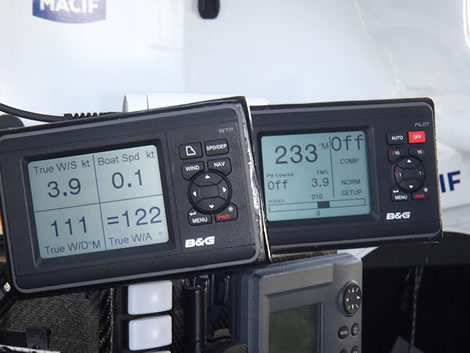
For years now, various people have dabbled with creating a virtual autopilot, modelling how a human steers in software. The most famous stab at this was made by Yves Parlier, generally with limited success. According to Seddon, while a pilot can be made to behave like a human helmsman, of bigger consequence to the performance of a regular autopilot is filtering out all the noise of the inputs, be it wind direction or boat speed in the dynamic situation of a rolling, pitching, yawing, fast moving IMOCA 60.
Fundamental to everything is of course is an electronic compass delivering accurate heading information regardless of its angle of heel even if there is the boat is in big conditions and moving around dramatically (a situation in which early fluxgate compasses performed very badly). Built into the B&G system is a gyro compass, but so vital is this reliable heading information, particularly when applied to derived functions, such as real time calculation of TWA, that the boats are typically fitted with specialist gear.
Back in the early days of the Vendee Globe one or two boats carried what was then a state of the art ship’s gyrocompasses. Philippe Poupon’s Fleury Michon X, for example had a massive Sperry affair weighing more than 50kgs, which as a result had to be mounted on top of the keel. This cost 10,000s of Euros (even back then) and took forever to calibrate.
Since then, and literally getting on for almost two decades now, the popular choice has been the lighter, cheaper KVH Gyro Trac (otherwise known as the B&G Halcyon Gyro Compass), which most of the boats in this Vendee Globe are still running today. However now another technology has emerged: fibre optic gyroscope (FOG).
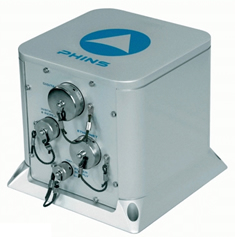
The Ixsea Hydrins is the latest example of this, describing itself as an ‘Inertial Navigation System’ used for survey vessels, but incorporating technology that is also found in a wide range of military applications from nuclear submarines to gun barrel stabilisation in tanks, etc. How it works is beyond the remit of this article (ie we don’t understand it...it involves laser beams being fired down opposite ends of a fibre optic several kilometres in length with one of the beams being slightly delayed due to something called the Sagnac effect). What we do know is that, significantly, and unlike other fluxgate or gyrocompasses, FOG has no moving parts and is its performance is superior to anything else out there, providing heading accuracy to 0.01deg, instantaneously and seemingly regardless of how awful the dynamic situation of the boat is.
However this technology comes at a price and the Hydrins costs a cool Euros 80,000. At least one boat in the Vendee Globe is fitted with one which we believe to be Bernard Stamm’s Cheminees Poujoulat. Puma also had one in the Volvo Ocean Race, while Groupama (cheapskates) merely had Ixsea’s Octans gyrocompass and motion sensor, coming in at Euros 69,000 a pop. The Mini Maxi Bella Mente also has an Octans fitted and so the story goes, USA17, Oracle Team USA’s 33rd America’s Cup winner, had one at both the top and bottom of their original wingmast to measure twist in it. Before it fell down.
A work in progress is how the pilot reacts to sea state. At present the B&G pilot doesn’t react to waves or changing sea states, although their WTP3 processor does look at the wave period relative to the boat, but this is obviously different to the real wave period (as AWA is to TWA), so upwind this period is shorter, downwind longer. The value in this is that it does provide a relative indication of the sea state ie it is twice as bad as it was 10 minutes ago.
“Surprisingly it is not that useful to the autopilot because any autopilot can steer in a regular wave state. The thing is dealing with the irregular bit that happens on top,” says B&G’s Product Line Manager, Alan Davis.
So at present the autopilot has no way of dealing with the situation featured in the famous Telefonica knockdown video from the Volvo Ocean Race when the Spanish VO70 was struck by a substantial wave beam on. In the cockpit the crew saw this wave coming, causing them to bear away and to hang on grimly. Could an autopilot ever do the same? “You’d need a 360° video camera and some very clever software,” says Davis.
However where monitoring the three dimensional motion of the boat does make a difference is in attempting to reduce errors due to severe movement at the masthead (where the wind instruments are located). “If you are taking the pitching of the masthead unit out of the wind calculation, you have got a much more stable wind calculation [AWA to TWA) to steer to, so the pilot isn’t having to react to that noise,” says Davis. Both WTP3 and H3000 processors provide this.
Getting accurate speed information is also important and once out into the ocean the boats are typically using GPS speed over the ground (SOG) as a source rather than the traditional paddlewheel. “Above 15 knots, a paddlewheel’s output becomes non-linear and it starts to over read,” says Seddon. “They don’t have that issue if they run SOG. There are still ocean driven currents of course, but it is not as important as when you’re sailing around the Solent.”
Some boats are also fitted with sonic speed sensors, but even the output of these becomes non-linear above around 15 knots and they don’t work at all when they ventilate. “The ORMA 60s used to have them on the bottom of the main daggerboard, and they worked really well there - unless they grounded,” says Davis.
And Seddon warns: “The danger with that is that your pilot is relying on a true wind calculation and fundamental to that is boat speed. If your boat speed suddenly goes from 14 knots to 2 knots because of [paddle wheel or sonic speed sensor] aeration, then your true wind disappears off and the pilot thinks it needs to pile on 20 degrees of helm and you end up in a really dangerous situation...”
Due to the wide beam of IMOCA 60s and how much of the boat can be out of the water when heeled, paddlewheels must be fitted to both port and starboard. Their positioning is also further hampered by the multitude of items sticking out of the bottom of the 60s from the twin daggerboards to a keel that cants, twin rudders and water ballast scoops.
Seddon remembers going sailing on Ecover and suddenly the boat careering off course because they had just dumped the water ballast, causing the paddlewheel to spin faster making the pilot believe boat speed had dramatically increased.
Another area of development is remote controls for the autopilot. NKE has one that is a favourite with Figaro sailors - wrist mounted and with on/off and steer left or right controls. In the Vendee Globe some teams have custom-made remotes for the B&G pilot. On MACIF, for example, Francois Gabart has one which has been rigged up so that whenever he operates the autopilot controls from his remote there is a loud ‘bleep’ to let him know that the message has been received.
Less sexy, but when it comes to the autopilot drive arms, many boats are now running Raymarine linear drives rather than hydraulic drives in order to save weight. The reliability of these is said to have improved dramatically in recent years, however skippers such as Mike Golding and Dominque Wavre keep a B&G hydraulic ram on board as a back-up.
So what is the upshot of all this?
Once upon a time, pilots couldn’t be trusted to steer in light winds or heavy winds (memories of skippers lashing themselves to the helm in gales), whereas nowadays they can steer as well if not better than the skipper in almost all conditions.
As MACIF skipper Francois Gabart put it after he completed his record-smashing 545 miles in a day: “The autopilot is just fine, the boat is perfectly balanced, so I’m not even worrying about that. That’s what allows us to sail fast and effortlessly.”
According to Miles Seddon the feedback he’s had from skippers is that they feel that the autopilot can comfortably steer the boat even in 30 knots with the masthead kite up. “To have confidence that it is not going to wash out, you are going to stay surfing, stay fast and stay safe, while you can get about your daily routine of downloading weather data, repairing bits of the boat and getting some food and sleep. It is a big difference to know that you can take a pilot from 2 knots up to 40 knots of breeze.”
However it is not as straightforward as this. On board skippers must keep their boat balanced as much as possible to reduce the load on the steering. This is made easier as with their twin rudders, most IMOCA 60s have a fairly neutral helm.
“The design has gone that way as well,” maintains Alan Davis. “Kingfisher probably started that. Her design team made a very early decision to make it a safe, balanced, simple boat and it did sail very well under autopilot. I think maybe we went back a little bit in the last race with all of the hard chines coming in which gives you a hard heel change, but one of the key design considerations of the boat is that it has to steer under autopilot which means that the rig is pretty balanced and the hull shape is fairly balanced.”
Given that 15-20 years ago a pilot even steering to true wind angle was a novelty, one wonders where all this will be in a decade’s time. Perhaps some sort of 360 degree video system that can detect waves in real time causing the pilot to take evasive action, won’t be so unrealistic by then.



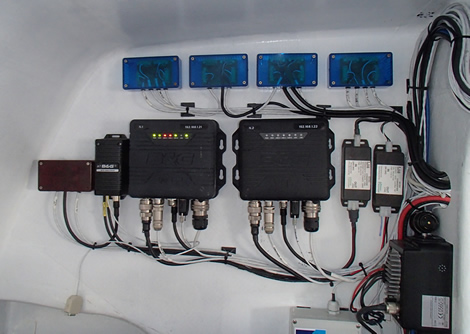
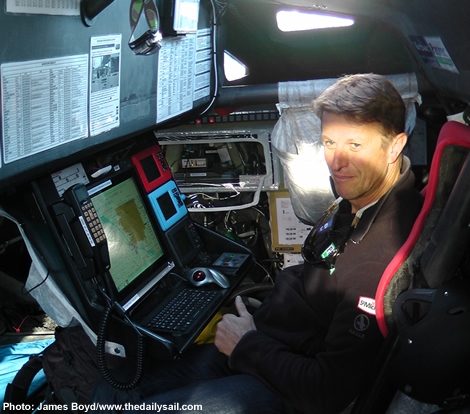
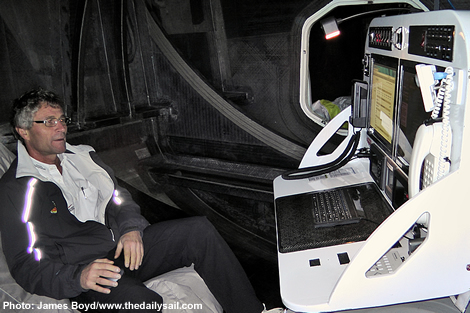

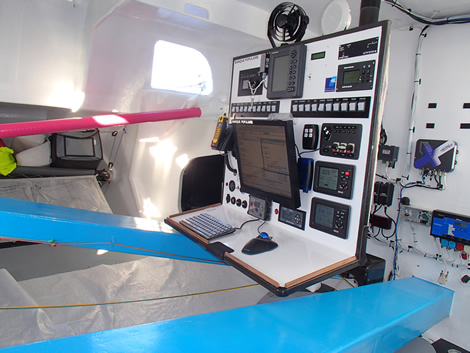









Latest Comments
Mats Ohlsson 17/12/2012 - 22:13
Super article! More of this please!Add a comment - Members log in